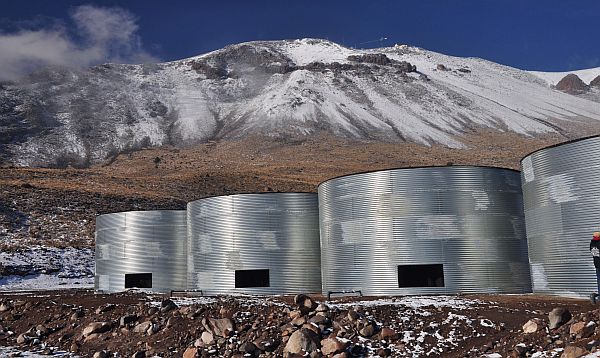Puebla, Mexico - The universe's most energetic phenomena, such as black holes and supernovae, produce gamma rays that can be observed and studied to learn more about the universe.
This week, the U.S. National Science Foundation, the U.S. Department of Energy and Mexico's Consejo Nacional de Ciencia y Tecnología (CONACYT) will inaugurate a new gamma ray astrophysics facility known as the High Altitude Water Cherenkov (HAWC) observatory. The facility - high on the slopes of Pico de Orizaba and Sierra Negra, near Puebla, Mexico, at an altitude of 4,100 meters - will help scientists probe these phenomena. Almost six years in the making, this facility has unique capabilities for detecting the highest-energy electromagnetic radiation, and complements other gamma ray observatories around the world.
Unlike optical or radio telescopes that observe light from astronomical phenomena directly, HAWC will study high-energy cosmic and gamma rays indirectly. As events like supernovae and gamma ray bursts occur, they release cosmic and gamma rays that smash into molecules in the air as they enter the earth's atmosphere.
These collisions set off chain reactions that produce showers of particles. These showers hit the Earth's surface where the HAWC observatory will detect them with an array of 300 tanks, each filled with approximately 50,000 gallons of extra-pure water. When those same particles pass through the tanks, they are travelling faster than the speed of light in the water. As they travel through the water, the particles emit flashes called "Cherenkov" light, in much the same way that an airplane can produce a sonic boom if it is traveling fast enough.
The tanks are equipped with detectors that will capture this Cherenkov light. With the highly sensitive HAWC observatory, astrophysicists will be able to use the Cherenkov light to reconstruct the timing, the energy, and the source direction of that initial gamma ray.
HAWC is expected to be 10-15 times more sensitive than its predecessor, the Milagro experiment in Los Alamos, and HAWC will continuously monitor over a wide field of view to observe two-thirds of the sky every 24 hours.
Original article


